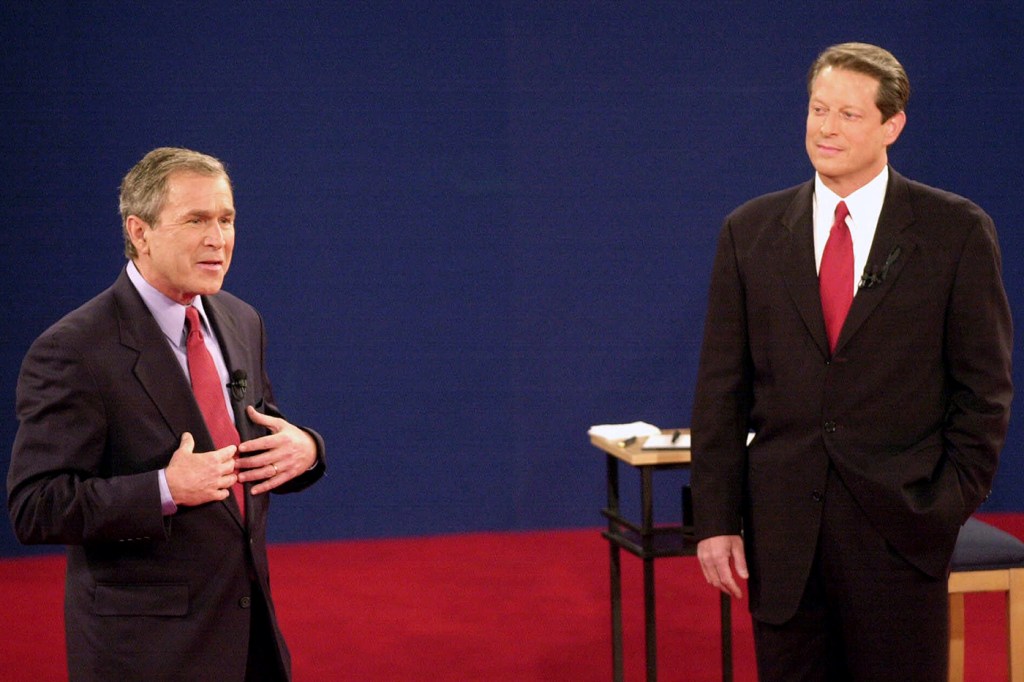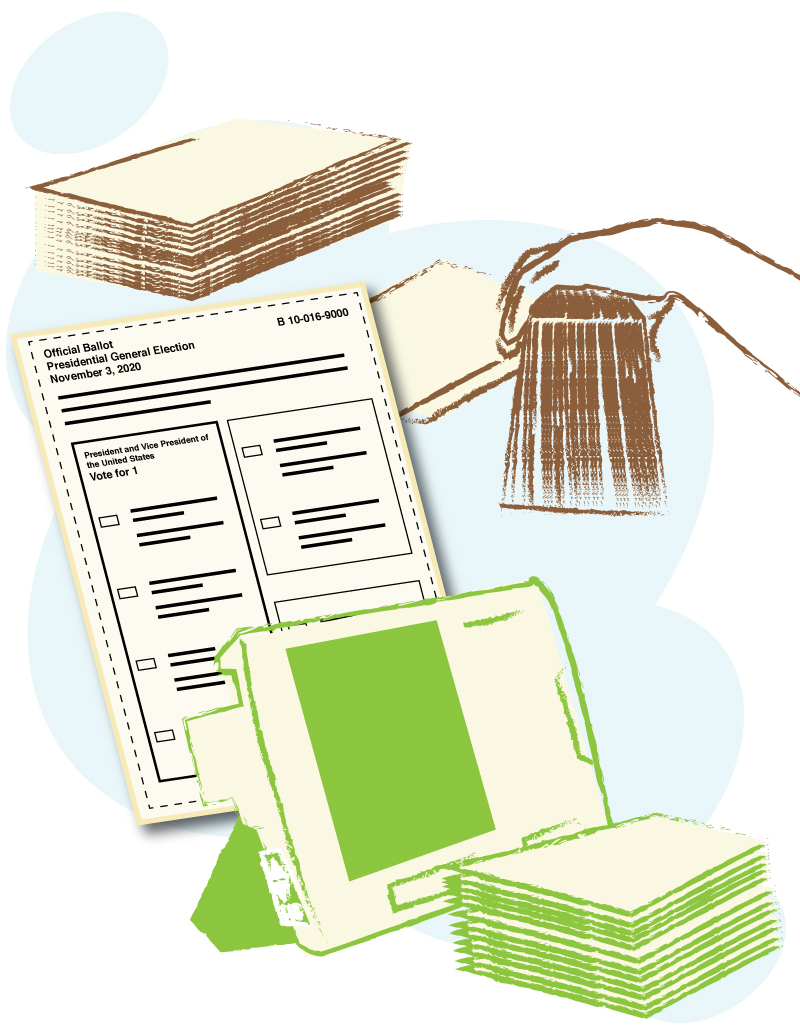The ghost of Bush v. Gore may haunt the 2020 election

In the frenzied weeks before Election Day, the Supreme Court has been called upon to weigh in on a number of election cases that could affect the outcome of a potentially close race between President Donald Trump and former vice president Joe Biden.
Embedded in one of those cases is a hint that the chaotic 2000 election, when results weren’t known for weeks, may rear its head once again, says Dan Urman, who teaches Constitutional law and the modern U.S. Supreme Court at Northeastern.
“This cycle, it’s like Bush v. Gore is back,” says Urman, who is also director of hybrid and online programs in the School of Law, and director of the Law and Public Policy minor.

Daniel Urman, director of hybrid and online programs in the School of Law, and director of the Law and Public Policy minor. Photo by Matthew Modoono/Northeastern University
In 2000, two up-and-coming lawyers were on the team that helped build a case to decide a razor-thin race between then-Texas Gov. George W. Bush, the Republican nominee, and then-Vice President Al Gore, the Democrat. Those lawyers were Amy Coney Barrett and Brett Kavanaugh, who today sit on the high court.
And when Bush v. Gore went before the Supreme Court, John Roberts—then a lawyer in private practice, now the chief justice—stepped in to fine-tune the case.
For those keeping track at home, three of the current nine Supreme Court justices helped build the scaffolding for a legal argument that has come up regarding this year’s election, in which the ballot tally may again come under the microscope.

In the case that ballots need to be retabulated during an election, officials may re-scan ballots electronically via an optical scanning machine or punch-card reader. If results are inconclusive (see “hanging chads”) or devices are not available, a manual or “hand” recount may be needed requiring visual inspection of each ballot. With electronic voting machines, a voter-verified paper audit trail is produced for each voter. If this is not available, image receipts are printed for each ballot cast.
Twenty years ago, the election came down to Florida’s 25 electoral votes, and margins were tight. The Gore campaign pushed for a recount, and weeks of litigation ensued. Eventually, the Florida Supreme Court ordered a statewide manual recount—one that was fraught with unforeseen problems related to the paper ballots. (“Hanging chads,” a term for small bits of paper still attached to punch-out ballots, entered the national lexicon.)
By December, Bush’s lawyers asked the Supreme Court to intervene. In a 5-4 vote, the court put a stop to the Florida recount, all but calling the election for Bush. The race was decided by just 537 votes out of six million cast in Florida.
The decision wasn’t the precedent-setting ruling that the high court typically makes, Urman says. It’s rarely been referenced again in legal filings before the Supreme Court, and is generally considered by legal scholars to be a “one-off,” he says.
Until now.
Kavanaugh included a reference to Bush v. Gore in his opinion on a case stemming from Wisconsin this year, citing it to explain that state legislatures, not state or federal courts, are the ones that determine election rules in the state.
Should the 2020 election be as close as it was in 2000, Urman says, we could see the kind of ballot battle that took place in Florida play out in a number of swing states across the country.
“We could see the same kind of litigation over votes, but unlike Bush v. Gore, it will be Bush v. Gores in Wisconsin, Pennsylvania, Florida—multiple states with contested ballot questions,” he says.
In addition to the Wisconsin case, the high court this year has seen cases from the battlegrounds of Pennsylvania, North Carolina, and Minnesota—all involving how and when votes must be counted. Most are based on questions that have arisen as a result of a crush of mail-in and early voting during the COVID-19 pandemic.
So far, the court has largely preserved the status quo in the states where disputes have emerged, but there’s evidence that it may rule more conservatively in the next wave of post-Election Day cases, Urman says.
That’s because, in the first wave of disputes, Barrett sat out. She was confirmed to
the court on Oct. 26, and said she hadn’t had enough time to review the filings. But Barrett won’t sit out for long, Urman says. She participated in her first case on the high court on Nov. 2, according to Reuters, and she is widely expected to bolster the court’s conservative majority.
“If it’s anything less than a blowout, decisive victory on Tuesday, watch the Supreme Court,” Urman says.
For media inquiries, please contact Mike Woeste at m.woeste@northeastern.edu or 617-373-5718.





